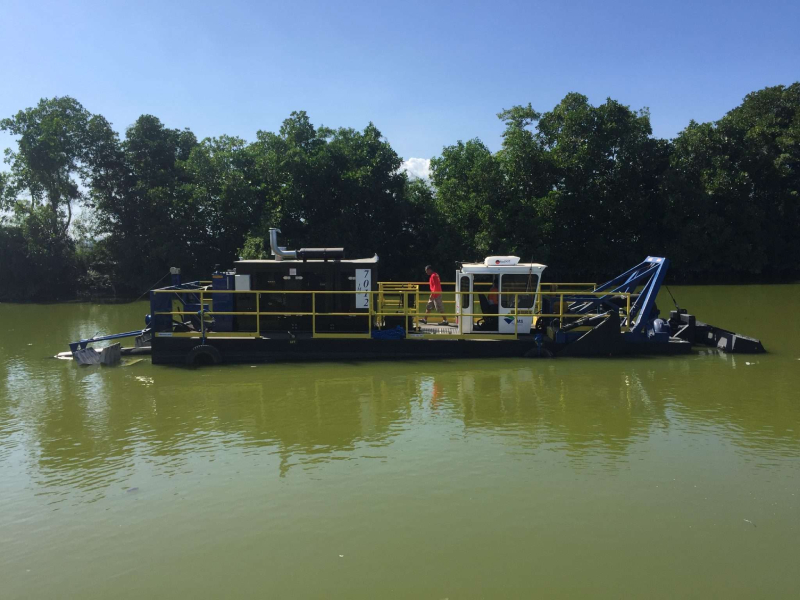River dredging is one of the critical activities aimed at maintaining navigable waterways, supporting ecological health, and managing sedimentation. With rapidly advancing technology and enhanced concerns about the environment, the future for river dredging equipment will be very different. The article talks about new emerging trends that are likely to redefine the dredging industry. The future of river dredging lies in advanced technologies and sustainable practices that enhance efficiency, feature state-of-the-art technology, and meet strict environmental standards. Keeping these trends in mind allows one to realize how the industry has evolved to meet contemporary challenges and opportunities.
Advanced Technologies Shaping River Dredging Equipment
Advanced technologies make for a new wave of river dredging equipment that is rich in innovations to increase both efficiency and effectiveness. One of the most important developments is the integration of real-time data analytics, which assists dredging operators in tracking operations with never-before accuracy. A modern dredging vessel is now equipped with state-of-the-art sensors and automated systems that drill deep into issues of sediment composition mapping, dredge performance, and even environmental impact. These technologies make dredging more accurate, operational costs lower, and less disturbing to the environment. Advancements in dredge design—some of which are high-efficiency pumps and energy-efficient engines—dictate the new standards of performance and sustainability for dredging.

Sustainable Innovations In River Dredging Equipment
Innovative solutions for sustainability shape the future of river dredging equipment. In this respect, new dredging technologies are being designed more sensitive to the environment and more eco-friendly. For example, state-of-the-art dredgers already apply hybrid propulsion systems where diesel and electrical propulsion work together to reduce emissions and lower fuel consumption. Furthermore, some of the initiatives being adopted include increased use of eco-friendly dredging equipment materials and reduced sediment re-suspension systems that protect aquatic habitats. These sustainable innovations are indicative of dredging needs that balance with environmental stewardship.
Integration Of AI And Automation In River Dredging Equipment
Artificial intelligence and automation are taking over the nature of river dredging equipment through high-end capabilities, making operations more effective and efficient. AI-driven systems are today applied to analyze data from dredging operations, predict patterns of sedimentation, and optimize dredging strategies. Automation technologies, especially such technologies as remote-controlled dredgers and underwater autonomous vehicles, reduce the need for human presence in dangerous or complex environments. These innovations increase dredging accuracy and speed, improve safety, and decrease labor costs. The merging of AI and automation is one of the gigantic steps toward evolving dredging technology.
Enhanced Efficiency Through Modular River Dredging Systems
It is in this light that modern, modular river dredging systems will provide flexible and scalable solutions to dredging projects. Such systems comprise interchangeable components that shall be put in place in order to constitute a specific tool for the execution of a project. This modular design facilitates transportation, deployment at speed, and flexibility of action in the face of changing site conditions. For instance, this modular dredging gear is easily rearranged to handle varying sediment types or dredge at different depths. This approach not only offers improved operational efficiency but also minimizes costs and associated downtime, hence making modular systems a very useful tool in modern dredging operations.
Eco-Friendly Practices In Modern River Dredging Equipment
A developing awareness of the impact on the environment has been the driving forces toward eco-friendliness and hence forms the defining trend in the future of river dredging equipment. Innovations in new dredging equipment are being designed with features that minimize ecological footprints, like low-emission engines and advanced sediment management systems. Some innovations include silt curtains and techniques for sediment dewatering; these help minimize the spread of pollutants and see to it that dredged materials are handled in a responsible way. Furthermore, dredging technology is being developed with factors minimizing impact on aquatic life or enhancing the restoration of natural habitat. These eco-friendly practices thus reflect a wider commitment to environmental sustainability within the dredging industry.
Adaptation To Changing Environmental Regulations In River Dredging Equipment
With evolving environmental legislation, continuously improving river dredging equipment has to meet new standards and requirements. Some of the trends now are developing equipment able to meet new emission controls, noise regulations, and water quality standards. Dredging companies invest heavily in technologies that not only meet existing rules but look even further ahead at changes in environmental policies. This proactive approach consists of fitting vessels with better filtration systems, enhanced capabilities for managing waste, and state-of-the-art monitoring features. Being ahead in regulatory trends will guarantee dredging practices that are not only legally compliant but also environmentally responsible.
Improving Safety Standards In River Dredging Equipment
A bright future for dredging equipment lies ahead, improving from the demands of enhanced safety standards, especially on worker safety and operational reliability. New technologies are being developed nowadays, considering one main goal is to avoid disasters and make marine-related operations much safer. Advanced safety features, for instance, have been installed in most of the latest dredgers, including collision avoidance systems, automated emergency shut-off mechanisms, and improved operator-training programs. Furthermore, there is also a move toward the use of improved PPE and tighter safety procedures for the protection of dredging crews. These changes reflect a heightened concern about creating a much safer and more secure community in which dredgers will be able to work.
Conclusion
Developments and trends show that the future for river dredging equipment looks exciting. We have identified nascent technologies, securing operational efficiency and safety through the integration of real-time data analytics, AI, and automation, and innovations in sustainability and environmental friendliness, which take into account the environmental concerns. Modular systems, by innovations, can make them fit for varied dredging works. Further adaptation to evolving regulations and raising safety standards is a commitment by industry to progress and responsibility. These trends will continue to shape the future of dredging and rivers as they further develop and new opportunities arise in both environmental protection and technological advancement.


